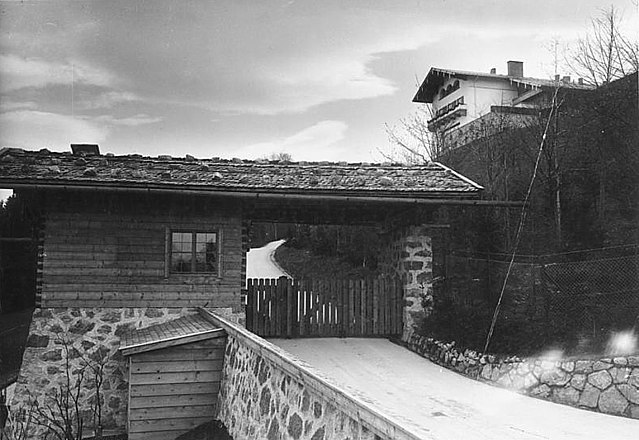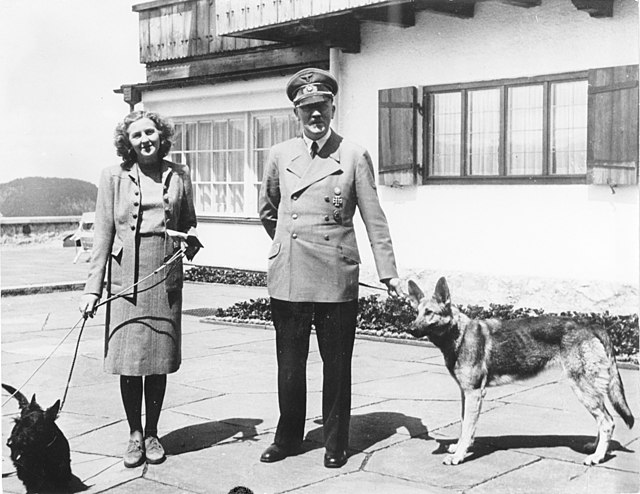Adolf Hitler and vegetarianism
Near the end of his life, Adolf Hitler (1889–1945) followed a vegetarian diet. It is not clear when or why he adopted it, since some accounts of his dietary habits prior to the Second World War indicate that he consumed meat as late as 1937. In 1938, Hitler's doctors put him on a meat-free diet, and his public image as a vegetarian was fostered; from 1942, he self-identified as a vegetarian. Personal accounts from people who knew Hitler and were familiar with his diet indicate that he did not consume meat as part of his diet during this period, as several contemporaneous witnesses—such as Albert Speer —noted that Hitler used vivid and gruesome descriptions of animal suffering and slaughter at the dinner table to try to dissuade his colleagues from eating meat. An examination carried out by French scientists on a fragment of Hitler's skull in 2018 found no traces of meat fibre in the tartar on Hitler's teeth.
Adolf Hitler at a dinner table
Hitler with his German Shepherd, Blondi
Hitler feeding deer, in a photograph captioned "Der Führer als Tierfreund" ("The Leader as an animal lover")
The Berghof was Adolf Hitler's holiday home in the Obersalzberg of the Bavarian Alps near Berchtesgaden, Bavaria, Germany. Other than the Wolfsschanze, his headquarters in East Prussia for the invasion of the Soviet Union, he spent more time here than anywhere else during his time as the Führer of Nazi Germany. It was also one of the most widely known of his headquarters, which were located throughout Europe.
Berghof (residence)
The "Great Hall"
Adolf Hitler and Eva Braun with their dogs at the Berghof
Venus and Amor by Paris Bordone, that adorned the "Great Hall", was ceded after the war to the National Museum in Warsaw.







